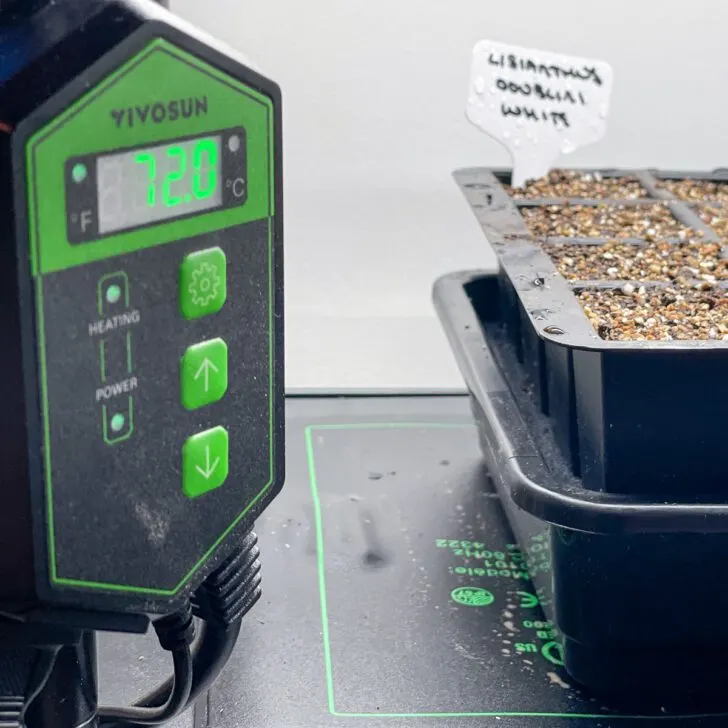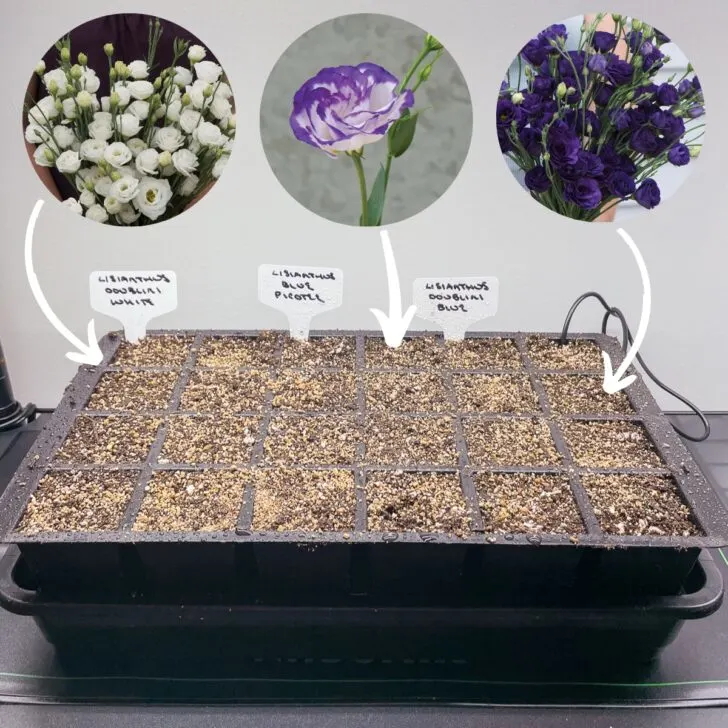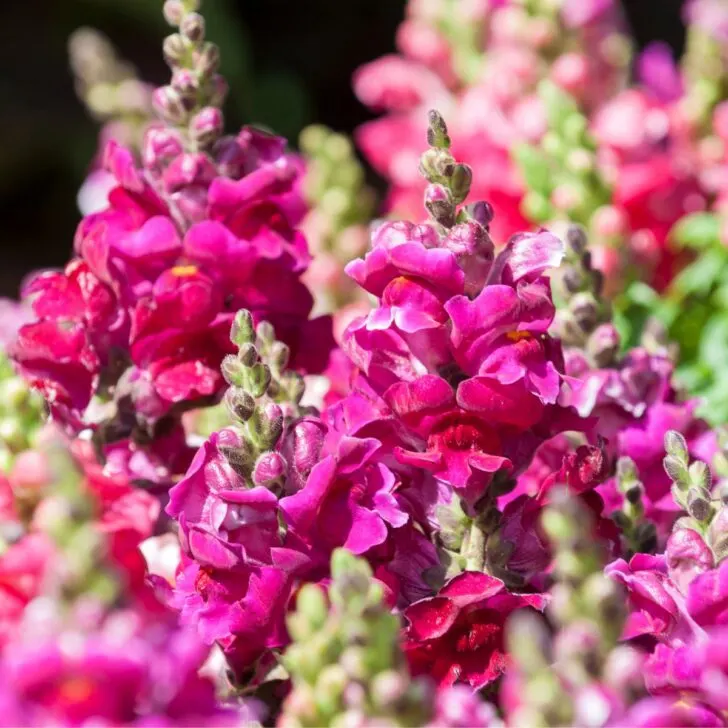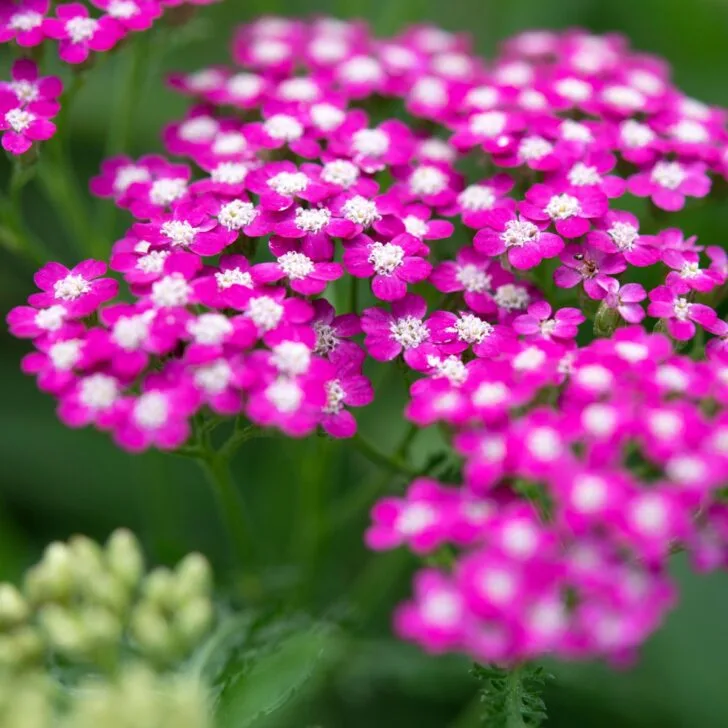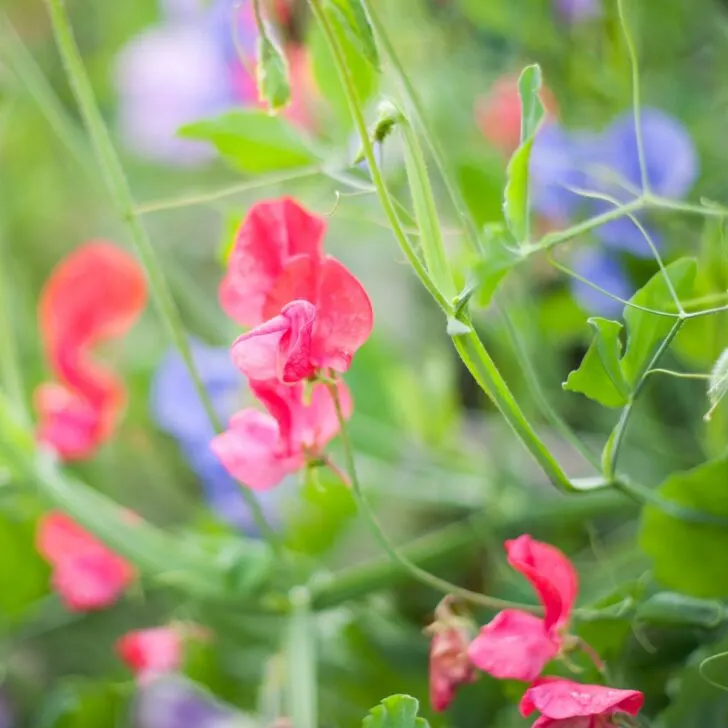Learn how to grow dianthus from seed indoors and plant it out in the garden for beautiful blooms all season long!

Dianthus, or Dianthus caryophyllus, is an easy perennial flower to start from seed. You may know them by their common names, carnation or sweet william. Whatever you call them, dianthus plants are a favorite in cottage gardens, or anywhere you need a bright pop of fragrant pink flowers!
Different varieties grow to different heights, ranging from a short 6" ground cover (called "garden pinks") to two foot tall blooms that make an excellent cut flower. The most common color is pink, but you can find other bloom colors as well.

I'm always looking for hardy perennials to fill in the empty spots in my garden, but they can get expensive when you buy a bunch of pots at the nursery! This year, I'm growing dianthus from seed. I can't wait to see splashes of bright pink and white double flowers out in the landscape later this spring!
This post contains affiliate links for your convenience. Purchases made through these links may earn me a small commission at no additional cost to you.
Dianthus Varieties
There are around 300 varieties of dianthus flowers, so there's sure to be one you'd love in your garden!
- The most common is Dianthus caryophyllus, which is a popular cut flower that is typically referred to as a carnation.
- Dianthus barbatus is also known as sweet williams, and has clusters of flowers on a single stem.
- Other species of dianthus, such as old-fashioned pinks, can be used as a ground cover.
I'm starting Raspberry Ripple dianthus seeds from Baker Creek, which is a variety of Dianthus caryophyllus with beautiful bright pink and creamy white double blooms above green-blue, grassy leaves. Aren't they gorgeous?
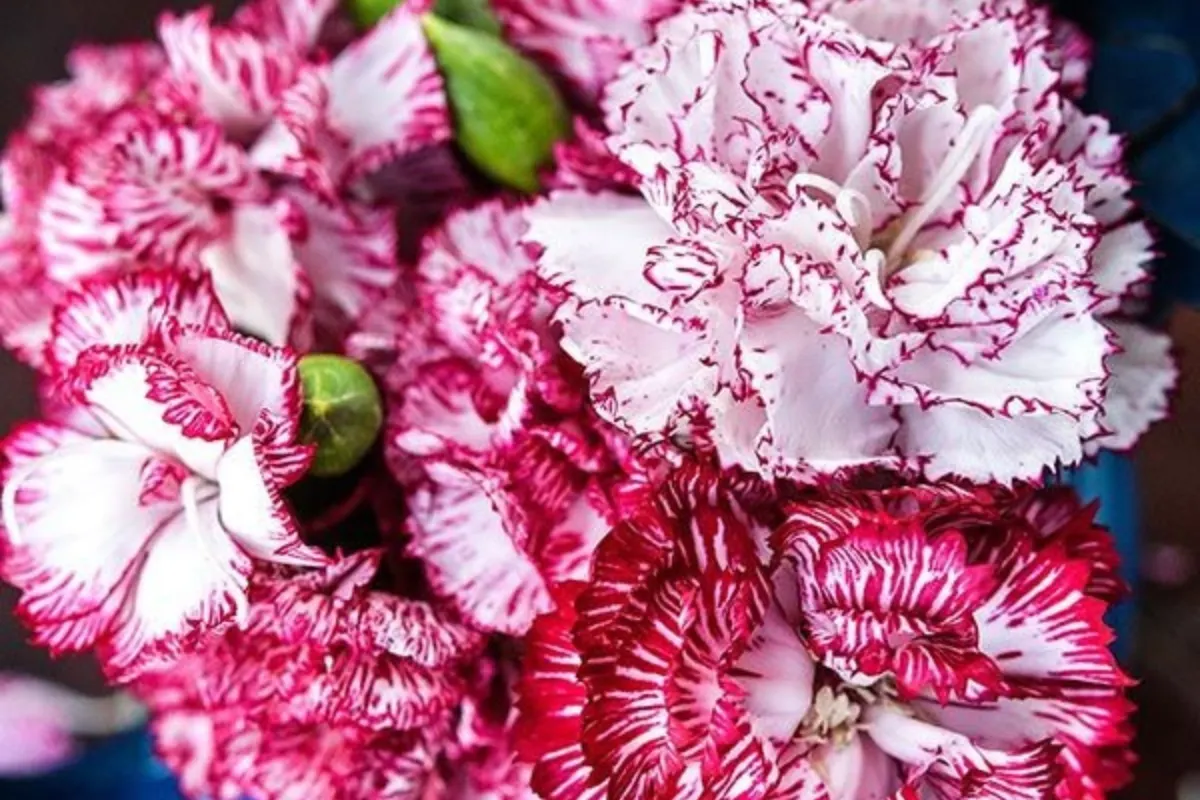
What do dianthus seeds look like?
Dianthus seeds are about 1mm or 1/16" in diameter and have a rounded end and a pointed end. They're brown or black in color, and are fairly easy to handle when planting.

Starting dianthus seeds indoors
Plan to start your dianthus seeds in late winter or early spring, 6-10 weeks before your last frost date. I'm starting mine on the earlier side (about 9 weeks), so the seedlings can be planted out before the last frost.
Dianthus plants need a short cold period to stimulate blooming in the first year. Otherwise, you may end up with a plant with no blooms until the following year!
All you'll need to start dianthus from seed is a seed tray, seed starting mix and grow lights!
Prepare the soil
Use a good quality seed starting mix, not potting soil. It's specially formulated to be lighter, so the tiny seedlings can push through easily. Mix it with water until it holds its shape when you squeeze it in your hand without any drips.
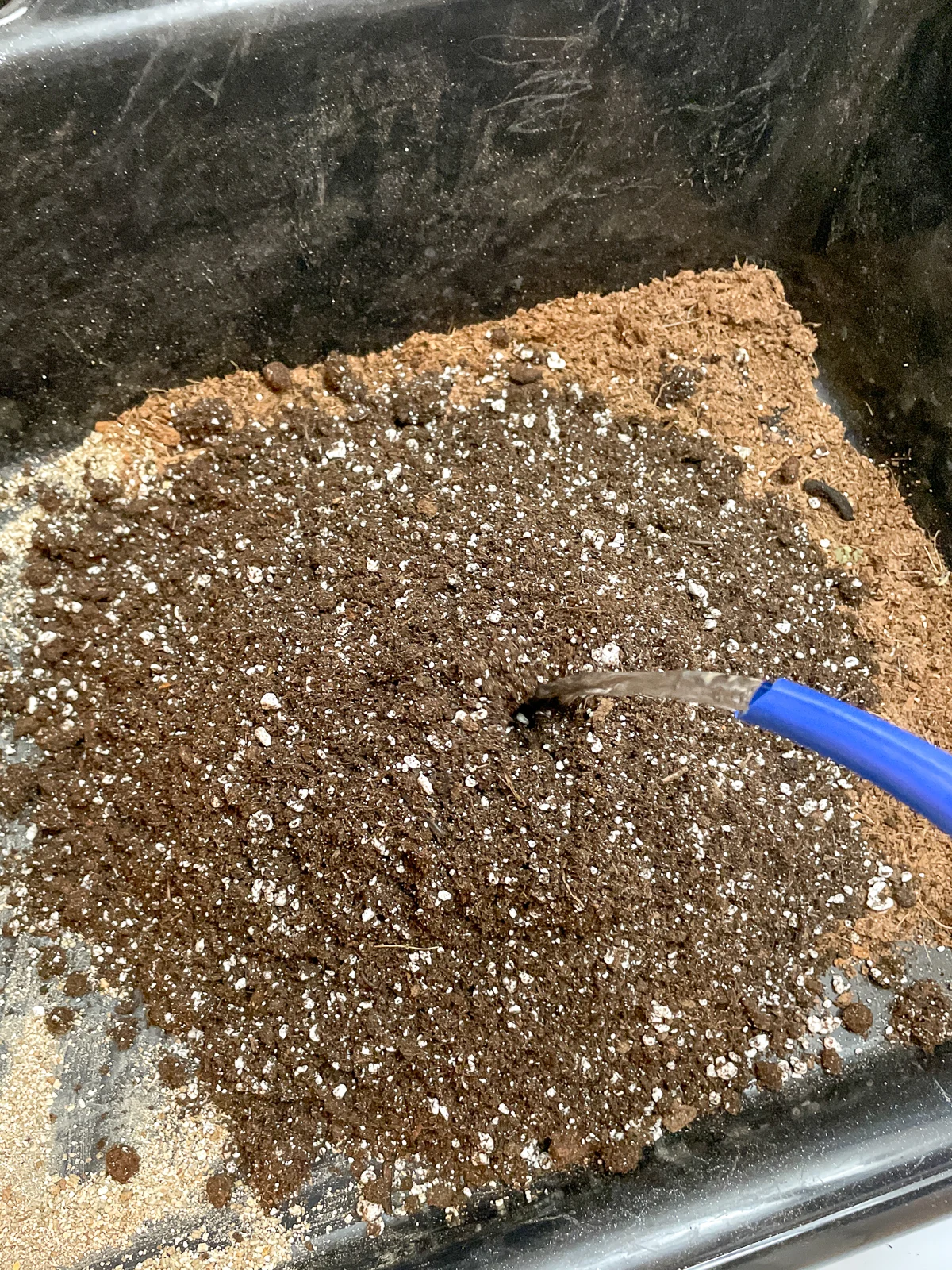
Fill each cell of a clean and sterilized seed tray with soil, then press down lightly to remove air pockets. Top off the tray with more soil as necessary.
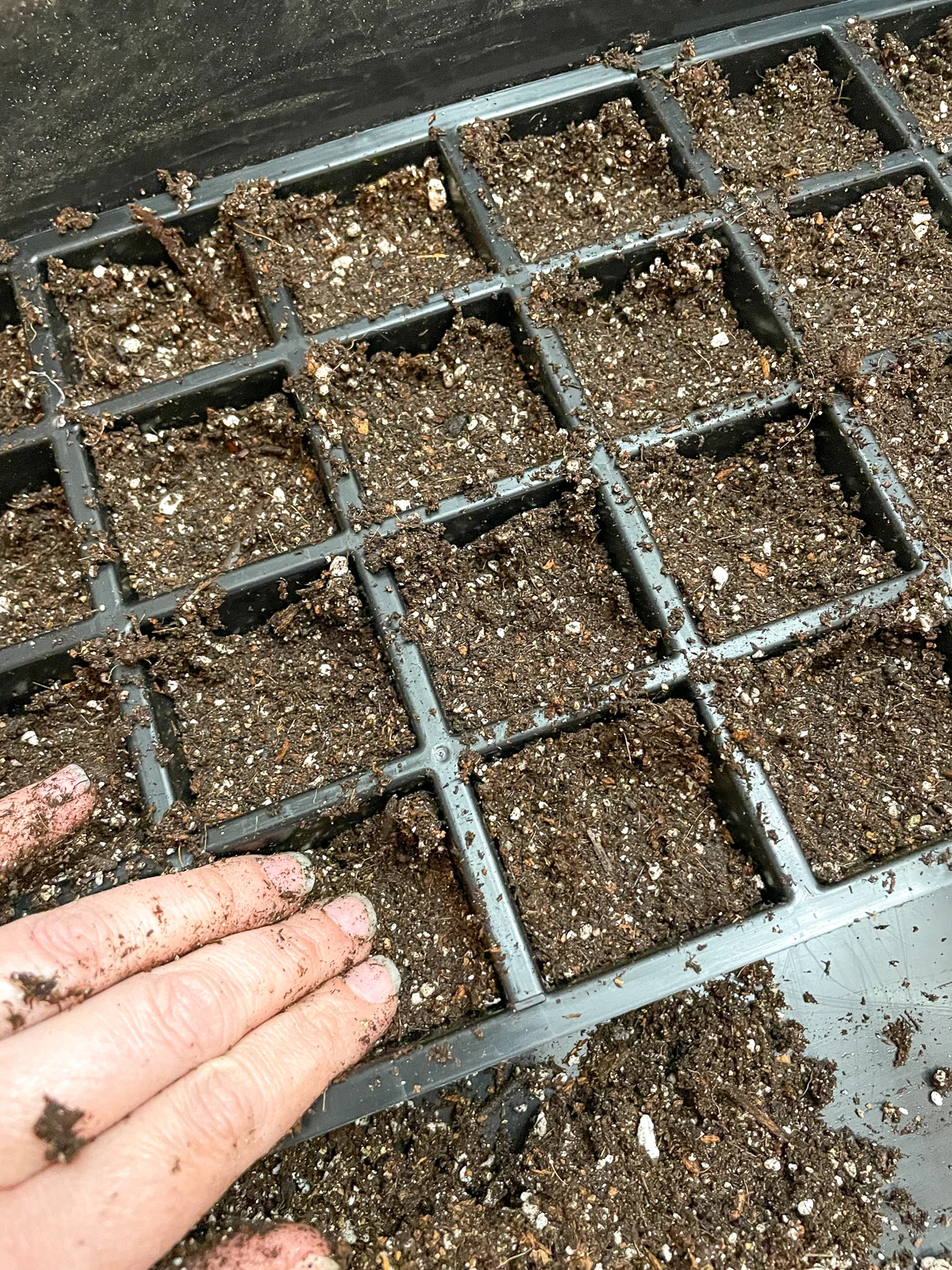
Dianthus seeds need to be planted about ⅛" deep. Make a small hole or indentation in the top of the soil with your finger or a dibber like this one.
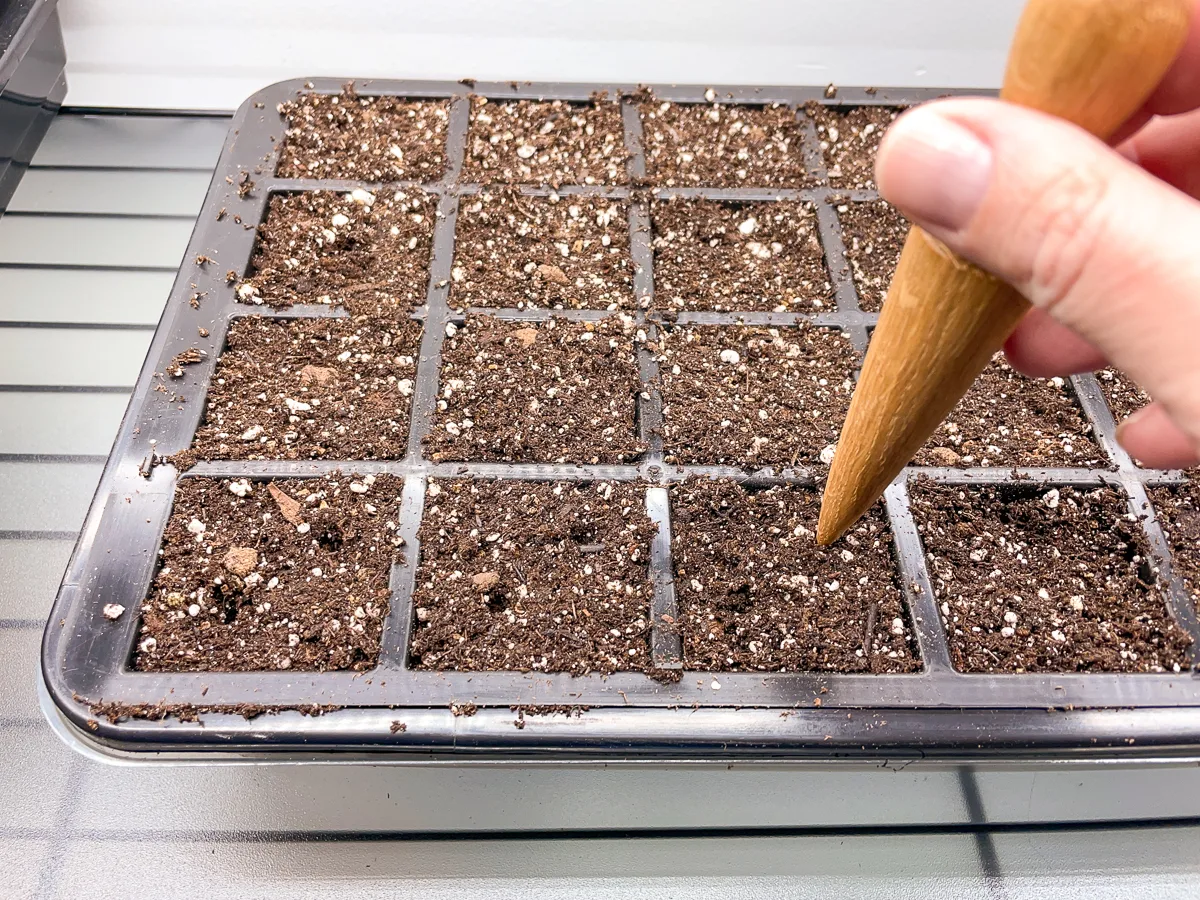
Plant the seeds
I like to pour the seeds into a small dish so I can easily see them while planting. I found that if I just dump the packet into my hand, I lose a few between my fingers and they're harder to pick up.

Drop one or two seeds in each hole. Since my seedling trays have pretty big cells, I make two holes on opposite corners and drop in one seed per hole. If both seeds germinate, I can either select the best one to grow on, or pot them both up into larger containers so they don't compete for resources.
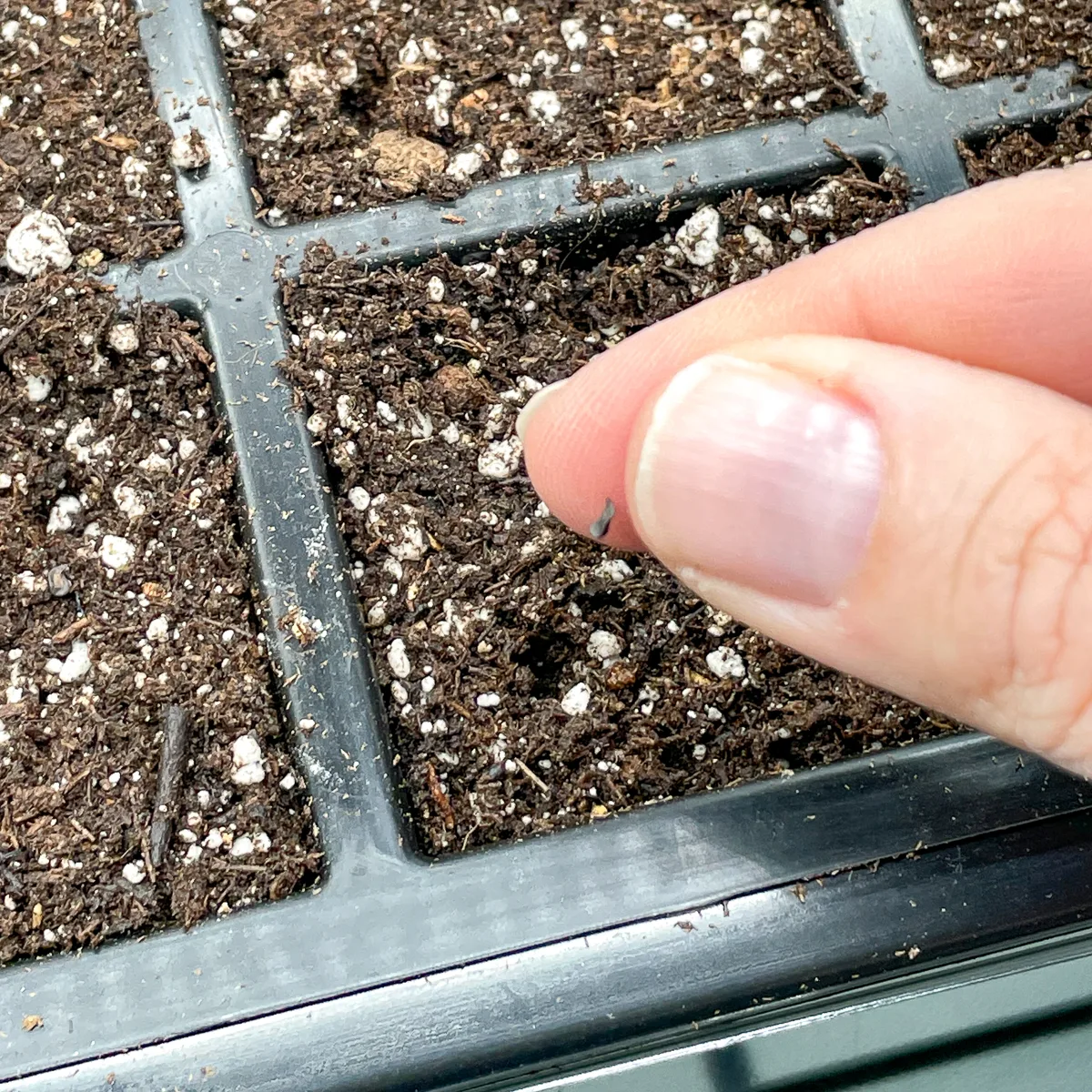
Cover the seeds lightly with soil without packing it down too tightly.
Light, water and temperature requirements
After planting your seeds, place the tray under grow lights or a bright location such as a greenhouse or cold frame where it will get full sun. They will take 7-14 days to germinate, so keep the soil moist even if you don't see growth yet.
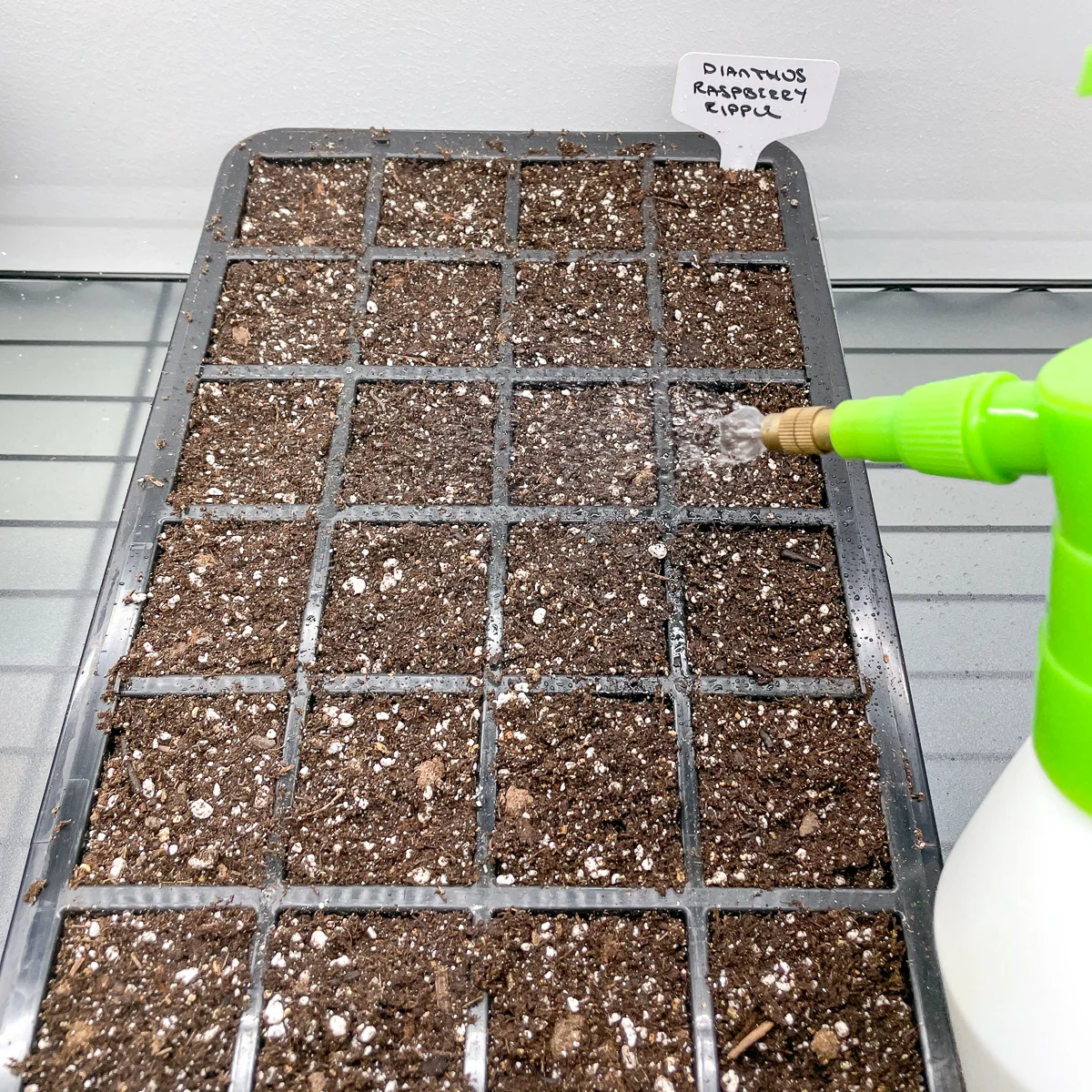
Room temperatures between 65 and 75 degrees is perfect for dianthus seeds to germinate, so you don't need a heat mat. Cover the tray with a humidity dome to retain moisture, but remove it as soon as you start to see your new plants emerge.
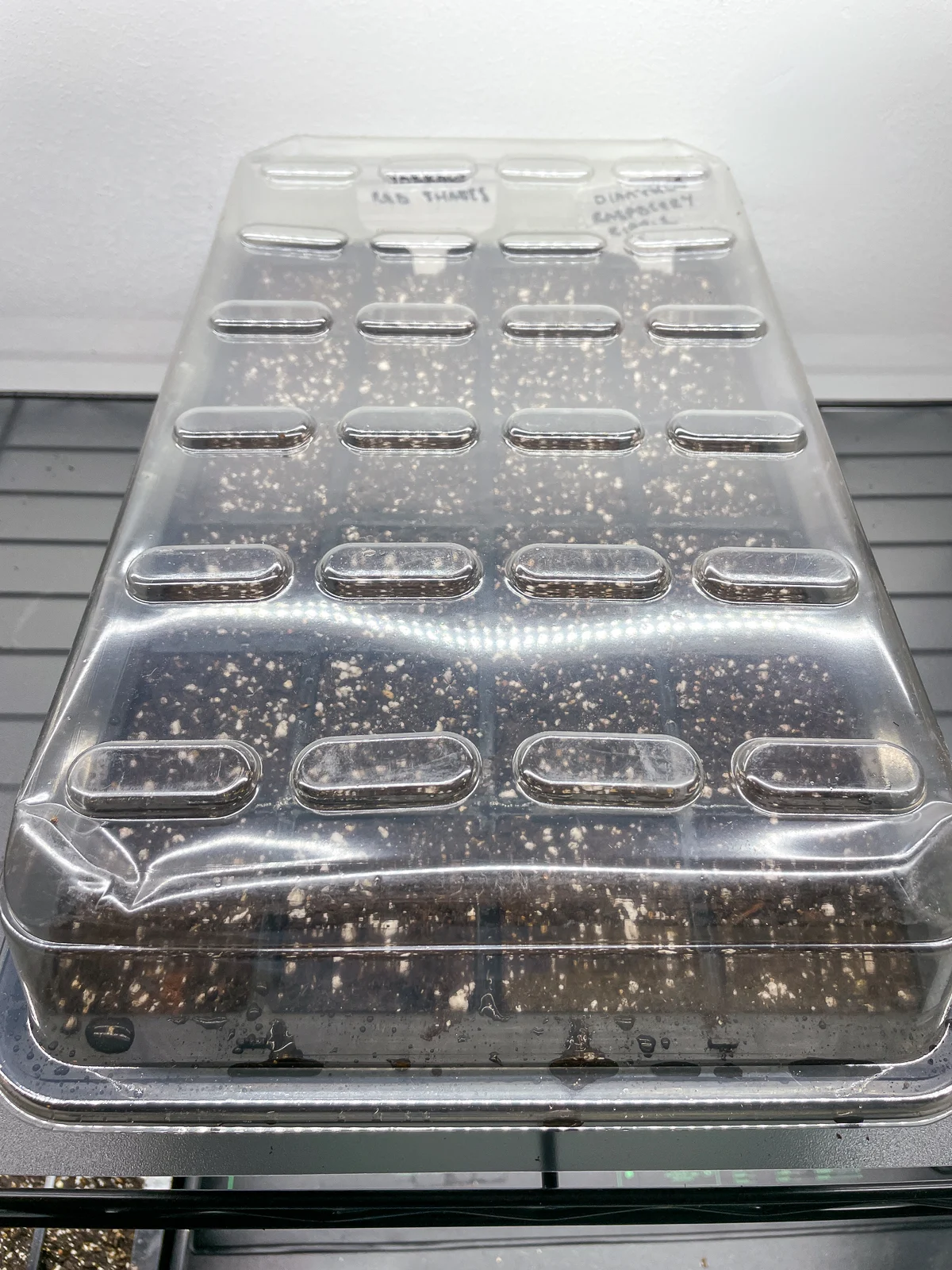
I'm also growing yarrow from seed in the same tray. They have similar water and temperature requirements, so they're a good combination to pair together if you don't need 24 dianthus plants!
How to Direct Sow Dianthus Seeds
Because dianthus plants need cool temperatures to flower in their first year, you can plant the seeds directly in the ground in late fall. If you wait until late spring after the risk of frost has passed, you'll just get foliage without any fragrant flowers until the following year.
If you direct seed, choose an area that gets full sun and space plants 6-8" apart. Dianthus requires well-drained soil that is slightly alkaline.
Transplanting Dianthus Seedlings
Once your dianthus seedlings have grown indoors for 6-8 weeks, it's time to start introducing them to the great outdoors! This process is called hardening off, and it's the best way to gradually acclimate young plants to a new environment.
Start by leaving them outside for just an hour or two before bringing them back indoors under their grow lights. Every day, increase the amount of time that they spend outdoors, until eventually you just bring them in at night. Those plastic containers don't have enough insulation to protect seedling roots from overnight frost.
After your dianthus seedlings are hardened off, they can be planted out in the landscape. The surrounding soil will keep the roots protected from a light frost, and the cooler temperatures will encourage flowering later in the growing season.
Plant the seedlings 6-8" apart in full sun. If you don't want dianthus to spread, deadhead the spent blooms before they drop to the ground and deposit seeds for next year.
I can't wait to see these dianthus in full bloom! What seeds are you starting this spring? I'd love to hear about it in the comments below!

